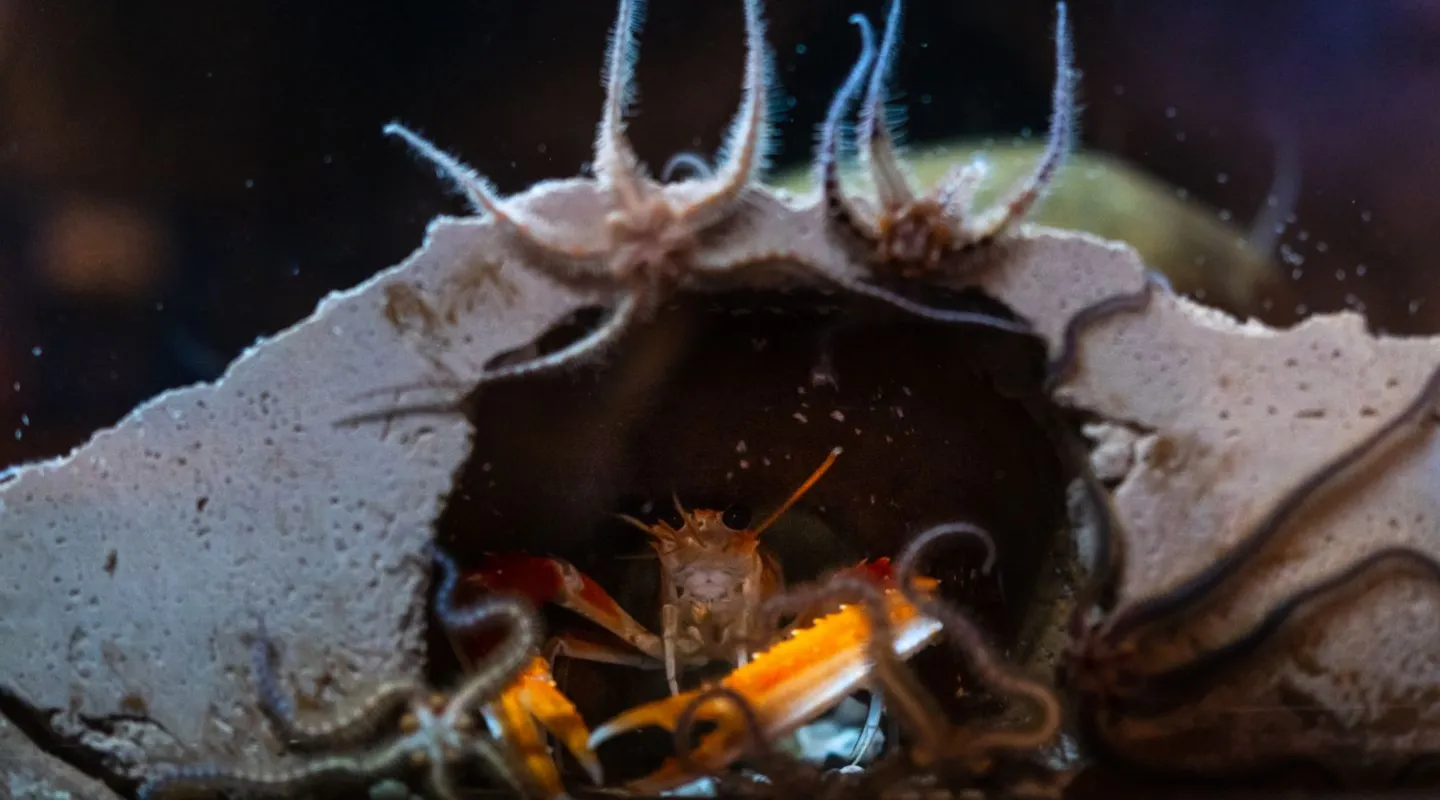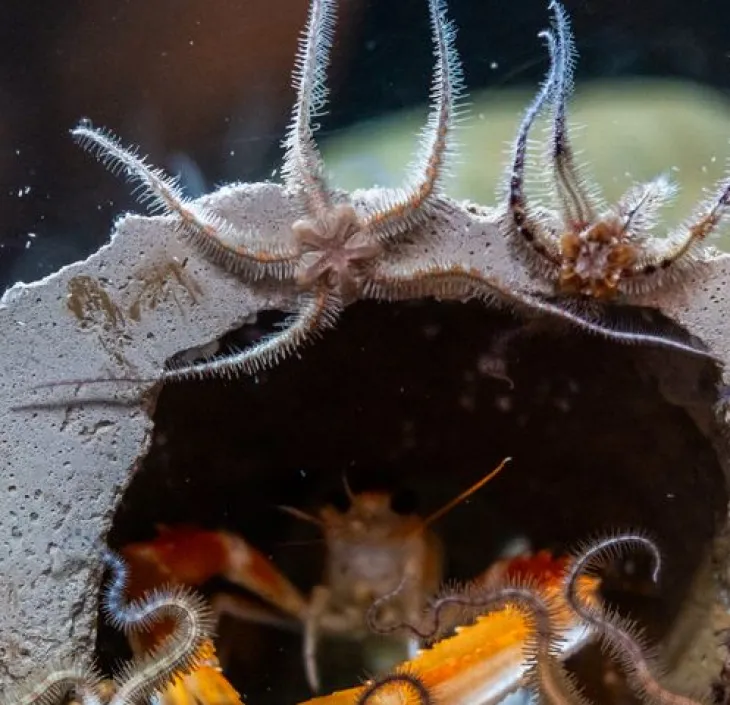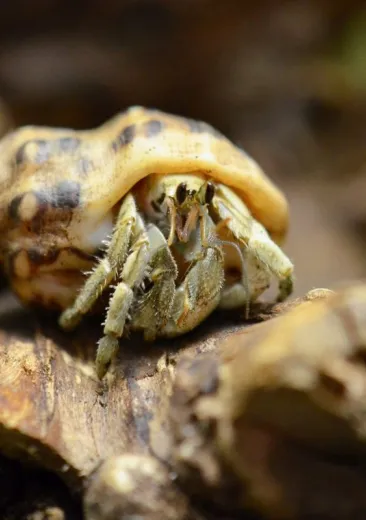Where is the animal to be found?
The Norway lobster is a sedentary crustacean that stays hidden in its burrow most of the time. However, it is an active nocturnal predator. It leaves its burrow at low light levels.
It lives at depths of between 20 and 800 metres, mainly on silty or sandy-silty seabeds where it digs its burrow (typically 200-600 metres).
How can it be recognised?
Males and females differ in the shape of the first pair of pleopods, the swimmerets that are rigid and transformed into a copulatory organ in males, and much thinner and more flexible in females, and in the location of the sexual orifices.
What is distinctive about it?
The Norway lobster can live alongside other organisms. The large-scaled goby or the Goneplax rhomboides (a small seabed crab) can be its neighbours. The Symbion pandora is an organism measuring a few tenths of a millimetre that remains attached to the shell of the Norway lobster.
Threat and protective measure
French catch regulations set the minimum size at 9 cm to guarantee product quality. European regulations for minimum size vary between 4 and 12 cm depending on the catch area.











